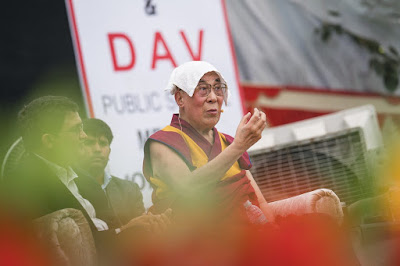Now that we have been so sternly schooled in the scope of practice of a government entrusted with holding elections, can we hope to be more sensible in our general expectations of what may come ahead?
Prime Minister Sher Bahadur Deuba and his Nepali Congress were supposed to slither away in utter electoral humiliation once the scale of the leftist alliance’s dominance in the first-past-the-post category became apparent. Instead, the premier and his party still profess to be working on tasks required for an efficacious transfer of power.
We’ve been reminded, meanwhile, that we have a bicameral legislature in place, the upper house of which still needs to be elected. With supposedly more hardline Communist Party of Nepal-Maoist Center counseling conciliation on how that body should come into being, the Communist Party of Nepal-Unified Marxist-Leninist (UML) couldn’t afford to be seen as a spoilsport, especially amid all its post-poll smugness.
A full-scale retreat being more unpalatable, UML chief and putative premier K.P. Oli has taken to stressing that while the related ordinance per se may not be unconstitutional, the manner in which President Bidya Devi Bhandari was impelled to authenticate it was.
For now, the accepted wisdom is that it will take at least two more months for the new government to take office. That’s probably not much of a problem for the Maoists, who are already in power albeit without officially designated portfolios. (Ministers with portfolios aren’t faring too well these days, considering the shouting matches in the last cabinet meeting.)
If the sense of exhilaration generated by the three-tier elections seems to be abating somewhat, it’s probably because each day seems to consume our attention with its new promise and peril. The merger of the UML and Maoist Center doesn’t seem as imminent as it did, say, a week ago. When UML leader Ghanashyam Bhusal suggested that the eras of People’s Multiparty Democracy and Maoism both were now over, growls erupted from both sides. If the obvious is so indigestible, then maybe burned bridges are meant to be rebuilt to find your way back.
We have a hung parliament in which the UML, Nepali Congress and the Maoists are the three biggest groups. More ominously, the fourth and fifth largest parties – the Federal Socialist Forum and Rastriya Janata Party – aren’t even fully behind the Constitution. Naming of provinces? Designation of provincial capitals? Divisions of resources and responsibilities? And the hefty bill?
More broadly, the Indians are intent on making up lost ground. The Chinese don’t know what to do with the windfall they’ve supposedly just reaped. The Americans? They’re still figuring things out, but want us to curb corruption in the meantime. And we’re not sure just how mad they are with us on that pesky UN vote on Jerusalem.
But, hey, we’re now fully and irreversibly republican, secular and federal. By the way, does the order matter?
Prime Minister Sher Bahadur Deuba and his Nepali Congress were supposed to slither away in utter electoral humiliation once the scale of the leftist alliance’s dominance in the first-past-the-post category became apparent. Instead, the premier and his party still profess to be working on tasks required for an efficacious transfer of power.
We’ve been reminded, meanwhile, that we have a bicameral legislature in place, the upper house of which still needs to be elected. With supposedly more hardline Communist Party of Nepal-Maoist Center counseling conciliation on how that body should come into being, the Communist Party of Nepal-Unified Marxist-Leninist (UML) couldn’t afford to be seen as a spoilsport, especially amid all its post-poll smugness.
A full-scale retreat being more unpalatable, UML chief and putative premier K.P. Oli has taken to stressing that while the related ordinance per se may not be unconstitutional, the manner in which President Bidya Devi Bhandari was impelled to authenticate it was.
For now, the accepted wisdom is that it will take at least two more months for the new government to take office. That’s probably not much of a problem for the Maoists, who are already in power albeit without officially designated portfolios. (Ministers with portfolios aren’t faring too well these days, considering the shouting matches in the last cabinet meeting.)
If the sense of exhilaration generated by the three-tier elections seems to be abating somewhat, it’s probably because each day seems to consume our attention with its new promise and peril. The merger of the UML and Maoist Center doesn’t seem as imminent as it did, say, a week ago. When UML leader Ghanashyam Bhusal suggested that the eras of People’s Multiparty Democracy and Maoism both were now over, growls erupted from both sides. If the obvious is so indigestible, then maybe burned bridges are meant to be rebuilt to find your way back.
We have a hung parliament in which the UML, Nepali Congress and the Maoists are the three biggest groups. More ominously, the fourth and fifth largest parties – the Federal Socialist Forum and Rastriya Janata Party – aren’t even fully behind the Constitution. Naming of provinces? Designation of provincial capitals? Divisions of resources and responsibilities? And the hefty bill?
More broadly, the Indians are intent on making up lost ground. The Chinese don’t know what to do with the windfall they’ve supposedly just reaped. The Americans? They’re still figuring things out, but want us to curb corruption in the meantime. And we’re not sure just how mad they are with us on that pesky UN vote on Jerusalem.
But, hey, we’re now fully and irreversibly republican, secular and federal. By the way, does the order matter?





















